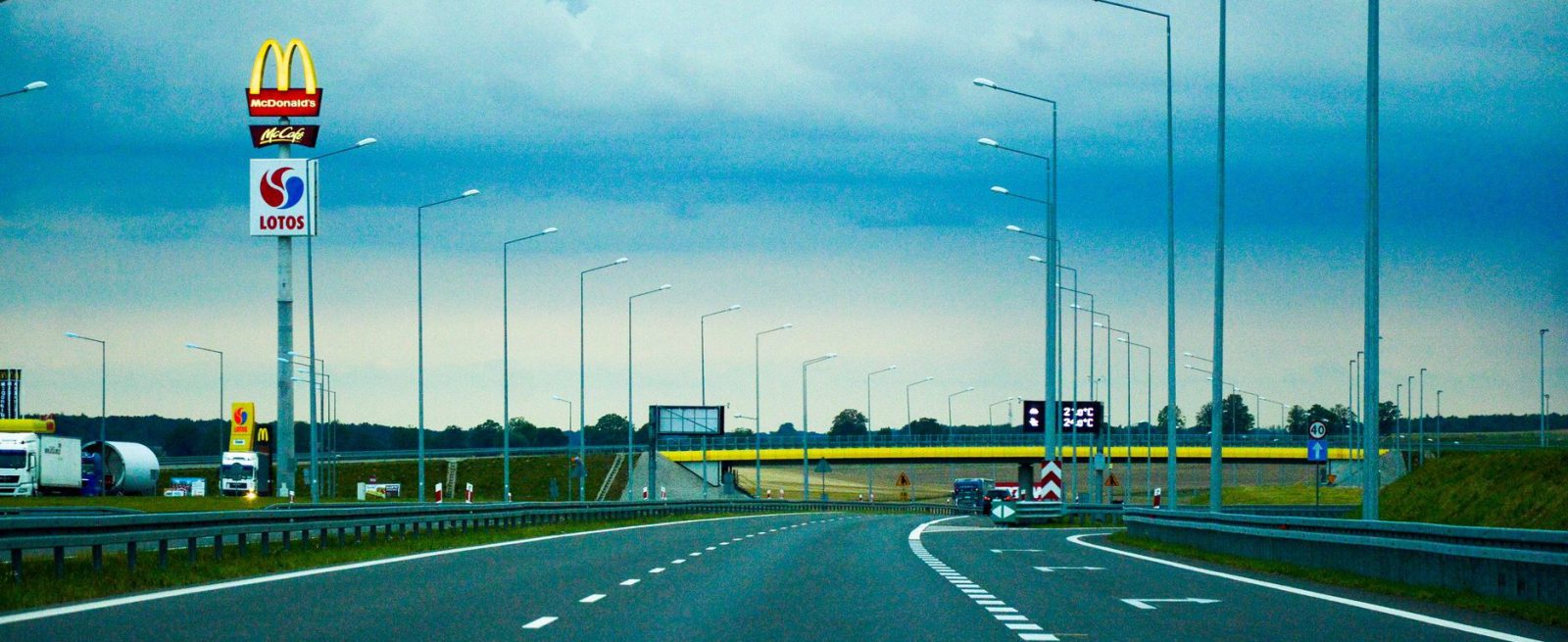Tech Talk: Nuggets of Wisdom on McDonald’s ‘Experience of the Future’
10 Min Read By Barbara Castiglia
McDonald’s, the world’s leading global foodservice retailer with more than 36,000 locations in over 100 countries, recently unveiled a long-term global plan that outlines initiatives to unlock meaningful growth and increase guest counts that includes:
- Enhancing digital capabilities and the use of technology to dramatically elevate the customer experience;
- Redefining customer convenience through delivery; and
- Accelerating deployment of Experience of the Future restaurants in the U.S.
McDonald’s is accelerating digital capabilities and enhancing its use of technology in restaurants, in the drive-thru and on the go. Inside the restaurants, McDonald’s is bringing greater control, convenience and personalization to customers through the ‘Experience of the Future’ use of kiosks and mobile apps. Mobile order and pay will be launched in 20,000 restaurants by the end of this year. McDonald’s intends to have most of the traditional free-standing U.S. restaurants modernized to reflect the Experience of the Future by the end of 2020.
Modern Restaurant Management magazine asked restaurant technology leaders — Olo’s Senior Director of Marketing Jacqueline Berg, Toast President and Co-Founder Steve Fredette, Bridg Founder and CEO of Amit Jain and SessionM CMO Patrick Reynolds — for their views on McDonald’s plans and the intersection of hospitality and technology.
In what ways do you anticipate technology will enhance the guest experience at McDonald’s?
Jacqueline Berg: We weren’t surprised to see McDonald’s go big on digital. They will be leveraging many elements of mobile and kiosk technologies to allow their guests to order in the way that is most convenient for them. While guest conversion to these platforms will be faster for some customers than others, one important note is that streamlined service will benefit all customers – whether they prefer to order on their mobile device or are loyal to the drive-thru. It will enable McDonald’s to increase order speed and throughput by eliminating average order fulfillment time. Less time will be spent manually entering orders and exchanging payment for mobile guests, allowing store teams to focus on fulfilling more orders per hour overall. Bypassing the drive-thru entirely with curbside delivery spots is quite a nice touch for guests who can’t leave their car while allowing for parallel processing of guests arriving to McDonald’s.
Steve Fredette: Technology will likely enhance the guest experience at McDonald’s by offering customers an easy, efficient and “customizable” ordering experience. We’re seeing an increased level of reliance on, and expectation of, technology in the restaurant space, no matter the type of restaurant, and we believe both demand and usage with continue to increase from here.
Patrick Reynolds: For a behemoth brand like McDonald’s, technology opens a new toolset that can be used to change the guest experience over time in a variety of ways. In the near term, McDonald’s is going to be able to use its digital presence to make its service even faster and more convenient with mobile ordering and mobile wallet. Longer term, it could extend its messaging reach using digital channels, enabling campaigns and promotions that are targeted based on factors like time of day or weather triggered events offers. For instance, if it’s raining in a certain area, McDonald’s could tell people in the area to stop in for 10 percent off hot beverages and a dry place to drink them. With so many locations worldwide, McDonald’s could also enhance its segmentation and micro-targeting strategy by deploying, testing and learning from different campaigns simultaneously – in some cases, even within the same market.
Are technology efforts and delivery enough to win back a significant customer base?
JB: Putting these systems in place is only the start. McDonald’s, and every new brand to delivery, must put the delivery experience front-and-center with regard to marketing and communications to guests. As we’ve seen with our brands, pairing a new takeout or delivery initiative with a significant menu reward will boost engagement with the new digital platform.
Amit Jain: Customers don’t want fancy technology: they want delicious, fresh food that fits their mood and lifestyle—and they want to engage with your brand on THEIR terms. If restaurants do that, they’ll grow sales comps.
Each guest has his or her own personal preferences, and with more and more food options available to consumers it’s imperative that restaurants successfully deliver their brand’s unique promise to remain relevant.
Companies like Panera Bread are taking lessons from sophisticated e-commerce retailers like Amazon.com and applying data science to understand and reach customers with extremely engaging, relevant marketing that is winning them back in all new ways: 24 percent of Panera’s sales are digital, which leads the industry.
Knowing that existing customers of a restaurant engage with marketing 4X more than new customers, transaction-driven platforms like Bridg provide restaurants with the means to engage individual customers based on their specific behavior. It’s the most cost-effective way of engagement and is putting traditional agencies that target broad demographic segments and “look-alikes” out of business.
PR: When leveraged properly, technology enables you to tailor the experience to the audience – whether that’s a segment, a market, a single-location or one lapsed customer at a time. There are new entrants popping up in QSR all the time. They may shave off some occasions through trial, but McDonald’s has seen a lot of competitors come and go. Adding a digital dimension to its physical points of presence cannot help but win customers. The only question will be the magnitude of that impact.
What other initiatives can McDonald’s put in place to regain and retain customers?
AJ: Traditional methods of digital restaurant marketing are becoming less effective: people are receiving more email than ever and loyalty programs only appeal to a tiny portion of customers that are willing to opt-in. Meanwhile, other traditional channels such as television, radio, direct mail, billboards and print are still stuck in the stone-age. Restaurants spend hundreds of millions each year in blast messaging on these channels with no real understanding of their impact. All marketers know is: if they stop advertising, sales go down, so they keep advertising.
Smart restaurant companies are using newly available digital platforms to instantly analyze actual, individual customer transaction history and derive audience segments, media budgets, creative and channel strategies based on real-world, real-time data.
These companies are using technology to power smart initiatives such as:
- Compressing the frequency of semi-regulars
- Driving loyalty club registrations
- Winning back lapsing or lapsed customers
- Activating new customers’ second visit
- Driving online orders
- Experimenting with regional campaigns and menu item/limited time campaigns based on transactional data analysis
- Identifying unique customer segments (Marie Callender’s customers are not like The Habit Burger’s, for example)
PR: Customer loyalty today all comes down to personalization and engagement. Providing new and existing customers with the right offers, through the right channel at the right time for them is a start. The next step is using digital to parse out both the media and the message appropriately.
Will any of these initiatives deter current customers who might not be technology savvy?
JB: The beauty of mobile ordering is that it helps to reduce bottlenecks in the on-premise ordering counters and the drive-thru. Not every McDonald’s customer will use mobile ordering, but every customer will enjoy the benefits to speed of service. Every mobile order contributes to an overall reduction in time spent verbally placing the order, manually keying it into the computer, repeating it back to the customer, and processing payment.
As we’ve seen with other brands, early adopters will jump on to the new technology interfaces right away and serve as positive reinforcements to those who might be more hesitant. If you are not as technologically driven but see someone successfully getting their coffee and hash brown instantly, all while you are standing in line, it may encourage you to do the same next time. We see that behavioral reinforcement today at Starbucks where baristas verbally call mobile orders, which can be heard by guests waiting in line, signaling that the program is operational and efficient.
SF: There are many tech-averse people who will still prefer interacting directly with restaurant employees. And that’s great! We don’t believe it has to be only one, or the other.

The more hospitality is important to a restaurant concept, the more personal interaction is important between employees and guests. I have read articles about how Chick-fil-A is beating their competitors by teaching their employees to say please and thank you, so it is important not to lose sight of the importance of hospitality. However, technology has increasingly permeated nearly everything in our daily lives, and adoption seems practically inevitable. It should be used to the advantage of the business, yet not deter customers.
AJ: While these initiatives may be based on hard science, the customer experience should be personal and easy, regardless of a customer’s technology competence.
Smart technology can be applied to create a great email ad just as it can create a compelling Instagram experience.
It can also be applied to hone traditional media such as TV and direct mail.
The “smarter” a restaurant’s marketing, the less “friction” consumers have because the marketing is engaging the right person with the right message in the right place at the right time.
PR: That’s why they make chocolate and vanilla. For people who want to use the drive thru or come in and sit down as they have for years or even decades, I doubt their experience will change. But for those who want to access the brand and product differently, that’s now available to them.
How will kiosks affect the bottom line?
SF: Kiosks help reduce wait times, which subsequently increase customer throughput at any given period. Also, kiosks like Toast’s integrate directly with a restaurant’s CRM and remember customers’ past orders. This adds an extra level of efficiency to the ordering experience that can entice people to return time and time again. Kiosks are also very effective at up-sell and cross selling as well as discovery and will tend to increase average order size. Restaurants also can reduce food waste by improving the accuracy of orders.
PR: More points of presence via kiosks could equal more occasions of use, in more locations. Think of how Starbucks has positioned itself in places like office parks to capture foot traffic throughout the day, even between the usual “meal” times. With kiosks McDonald’s could open itself to more “snackers” at off-peak hours. The move also conveys that McDonald’s is serious about aligning the “story and the store,” where they’re talking innovation and delivering on it through new offerings.
What are challenges McDonald’s faces when increasing its use of technology in guest interaction?
JB: Operational changes and consumer adoption are two large hurdles any digital ordering system needs to clear. Brands need to spend significant energy to communicate the vision and execution plan to all their stores and franchisees. They will need to educate the teams on a number of new scenarios, such as how to refund orders and communication scenarios with third-party delivery services. Specific to delivery, third-party services are fragmented by region and so there will be a significant effort needed to ensure there’s a consistent brand experience regardless of which courier is fulfilling delivery. All these efforts are time and energy well spent, given their potential to McDonald’s growth projections and their vast footprint, where they enjoy the luxury of having a majority of the population of the U.S. living within a few miles of a McDonald’s.
SF: Changing consumer behavior can be hard. But ultimately if McDonald’s kiosks can allow guests to skip the line, it is hard to imagine they don’t get adoption. No one likes waiting in line.
PR:When leveraged properly, technology enables you to tailor the experience to the audience – whether that’s a segment, a market, a single-location or one lapsed customer at a time.
There are new entrants popping up in QSR all the time. They may shave off some occasions through trial, but McDonald’s has seen a lot of competitors come and go. Adding a digital dimension to its physical points of presence cannot help but win customers. The only question will be the magnitude of that impact.
Does the increasing use of technology offer competitive advantages?
JB: As McDonald’s has started to see with the first wave of Experience of the Future restaurants, revamping technology offerings can have a significant impact to revenue per square foot. McDonald’s locations across the world that have already implemented the digital enhancements are already enjoying mid-single digit sales lifts. With regard to delivery specifically, most delivery orders tend to be incremental, bringing new opportunities to the brand for scenarios where customers cannot leave their homes or offices, opening up a new “visit” occasion – even if they don’t ever enter the premises.
SF: Offering customers efficiency, convenience and simplicity through the use of technology, if done right, can create a better customer experience. And a better experience can absolutely be a competitive advantage. While each restaurant is certainly unique in its own way, restaurants that don’t adopt technology that meets their customers’ expectations will find themselves falling behind.
PR: To use a sports analogy, if a team already has an incredible “ground game” and now adds a serious passing game, they become more effective overall.

McDonald’s has the brand recognition, a massive footprint and speed of service. Add more convenience and more ways to access the brand, and everything is elevated.
What impact do you expect delivery services to have on the franchises and on independent restaurants near a McDonald’s?
JB: Pizza and other traditional delivery restaurants have the most ground to lose. NPD Group data shows that non-pizza delivery is growing strongly and is up 33 percent in the past five years. Pizza has long been a delivery staple for American consumers, but can potentially lose share as other categories build awareness with customers and serve as viable options for home delivery.
PR: Franchisees are sophisticated business people. If McDonalds’ delivery service starts driving new occasions, improves service and attracts new customers, they’ll find a way to either follow suit or play up their unique value vis a vis McDonald’s.
How can McDonald’s put an effective delivery system in place?
JB: If McDonalds’ delivery efforts in Asia are any indication of the success to come in the U.S. market, they are set to capitalize on a wave of new incremental sales from convenience-minded guests. All multi-location brands need to set careful parameters around the delivery experience with their providers so that food does not arrive cold, later than expected, or in a way that does not fit their brand standards. Setting these parameters will improve upon the existing experience that you get if you use a non-integrated marketplace to place your order, where the order isn’t entered into the POS until the driver is able to reach the store.
PR: McDonald’s knows operational excellence like few other companies. They already have both the skill and will to make this happen, and are very sophisticated and efficient at what they do. For a streamlined business like McDonald’s, putting an effective delivery system in place should be no problem.
What do you feel the McDonald’s of the future will look like?
JB: You can envision a McDonald’s with five six customer paths happening simultaneously: traditional drive-thru and counter, kiosk, multiple mobile orders handed off at curbside, and delivery couriers collecting an order for a customer who doesn’t have time to run out. We predict that brands like McDonald’s will allocate more of their traditional dining space to these efforts. It’s an exciting time to reimagine even the most efficient and powerful guest service in the quick-service space.
PR: To put it simply, Theater + Convenience = Delight. From the early days of toys, clowns and PlayPlaces, McDonald’s has always been about bringing entertainment to meal time in a convenient way. Technology will open it up to new, engaging digital experiences and make it more convenient than ever. Expect more happy consumers, and more Happy Meals.


